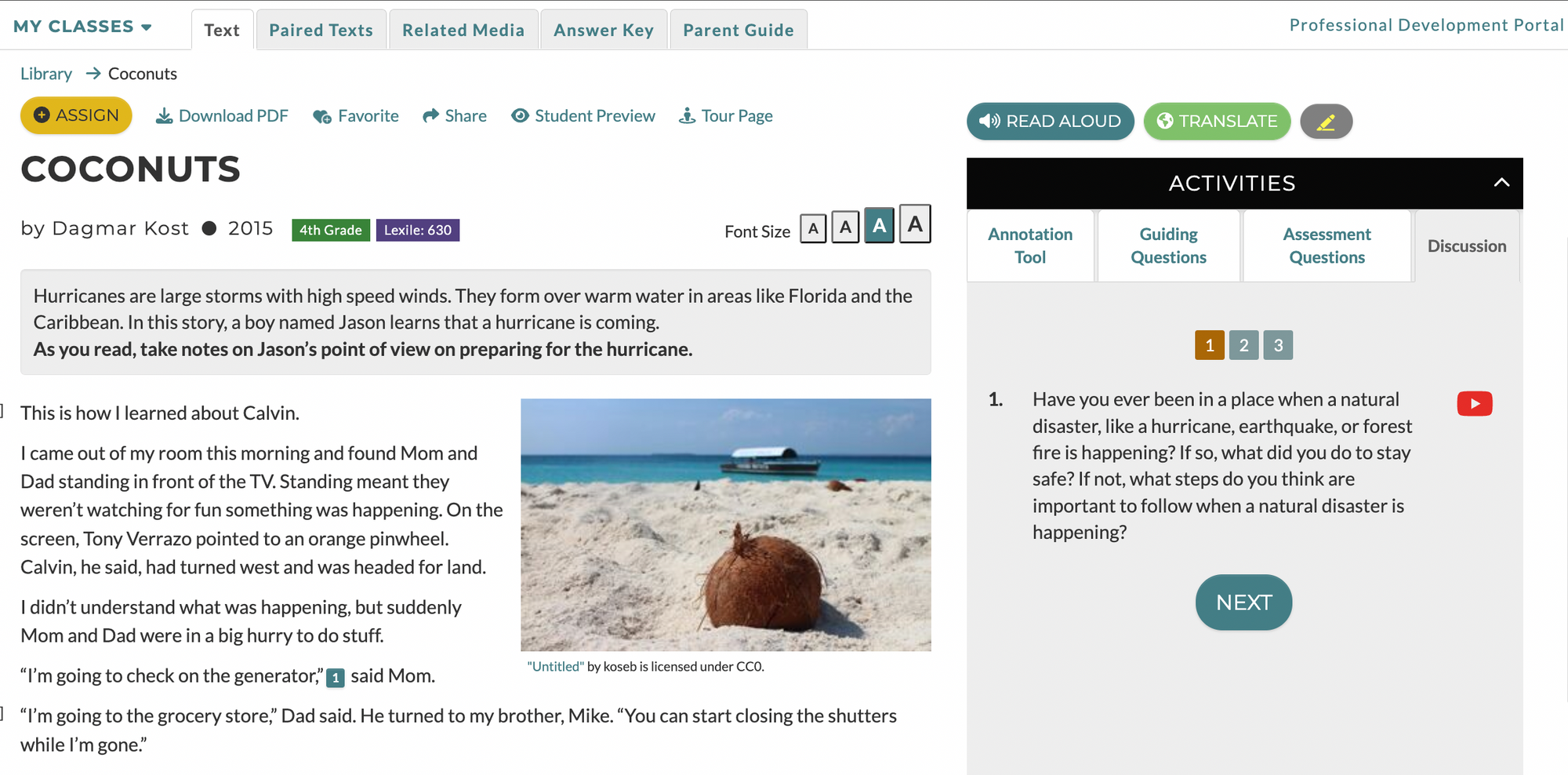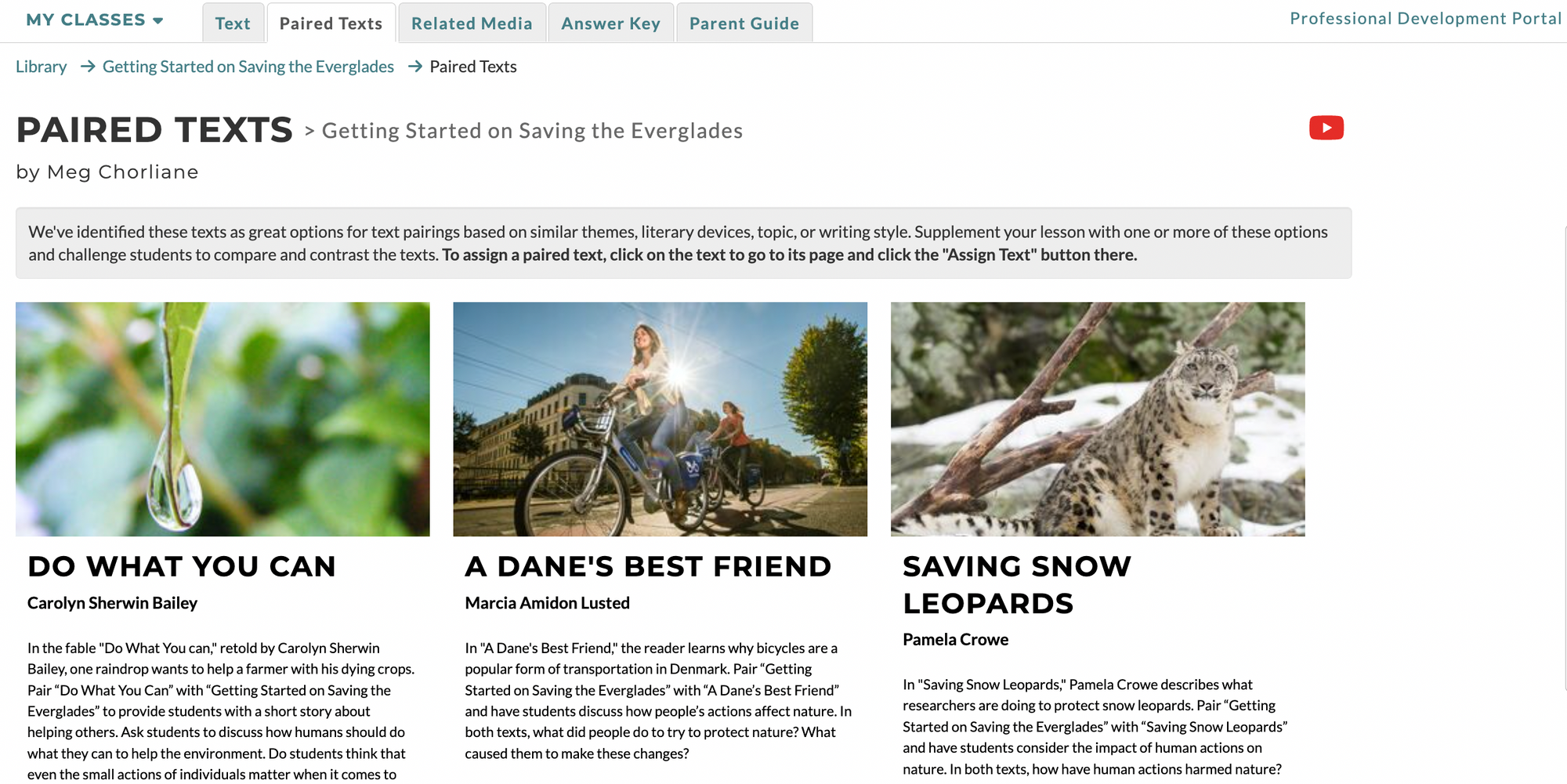From gigantic mountains, to the depths of the ocean, Earth never ceases to amaze us. Students love learning about our planet!
An important part of this education is learning how to protect the animals and natural areas we love. Reading texts that highlight conservation efforts will empower students to make a difference in their own communities.
Here are 8 elementary stories and informational texts from CommonLit which explore the wonders of our planet and how we can protect it.
Short Stories
“Earth Day Birthday” by Jody Jensen Shaffer (3rd Grade)
In this short story, April declares that she no longer wants to share her birthday with the Earth. April’s birthday falls on Earth Day, and every year, she has a themed party focused on taking care of the environment. This year, April is determined to have her own day, but when she gets to the parking lot of her party venue, she sees that it is full of trash. She decides that sharing a birthday with the Earth is not so bad and cleans up the trash with her friends.
After reading, have students make text-to-self connections. Ask students Discussion Question 3, “April and her parents protect the environment because they care about it. What is something that you do for the environment to protect it? Why is it important for humans to take care of the environment?”
“Hooray for Us!” by Connie Hurst Howard (3rd Grade)
In this heartwarming story, a group of students decides to clean up an old park next to their school. Even though they do not make enough money to clean up the park on their own, their community donates supplies and helps with the clean up. The class names the park “Rainbow Park” to symbolize the many different people, just like different colors in a rainbow, who came together to make a difference.
As students read, have them follow the annotation task, which asks them to take notes on the steps the students take to clean up the park. Then, ask students to discuss how the community came together to help with the cleanup.
“Coconuts” by Dagmar Kost (4th Grade)
In this story, Jason is confused when his parents ask him to pick up coconuts before incoming Hurricane Calvin hits land. A reporter asks Jason to announce to the camera that he is picking up coconuts, but Jason doesn’t really see the value in what he is doing. Later that evening, Jason learns about the danger coconuts pose during a hurricane and understands the purpose of his job.
This meaningful text provides students with the chance to make text-to-self connections. Ask students Discussion Question 1, “Have you ever been in a place when a natural disaster is happening? If so, what did you do to stay safe? If not, what steps do you think are important to follow when a natural disaster is happening?”

Informational Texts
“A Dane’s Best Friend” by Marcia Amidon Lusted (4th Grade)
Many students love to ride their bike around their neighborhood or town. Maybe a couple of students even bike to school. But did you know that in Denmark biking is the most common method of transportation? In this fascinating text, the author explains why bicycles are widely used in Denmark and the benefits of riding your bike.
After reading, ask students to make text-to-self connections. Use Discussion Question 2, “In the text, people protested to make the capital city permanently car-free. Is there a cause you care about? What can you do to bring awareness to that cause?”
“Getting Started on Saving the Everglades” by Meg Chorliane (4th Grade)
In this text, the author explores the human impact on the Everglades, an important wetland ecosystem in Florida. As more people moved into the Everglades in the early 1900s, they drained and destroyed the wetlands. The federal government established the Everglades National Park to protect the wetlands, and many people are still working to save this national treasure today.
Consider pairing this text with “Saving Snow Leopards” to extend students’ learning about conservation efforts. After reading both texts students can discuss the impact of human actions on nature. Ask students how human actions have harmed nature and what humans are doing to repair nature using evidence from both texts.

“The Plastic Problem” by Jacqueline Pratt-Tuke (5th Grade)
In this text, the author explains how plastic is harming the planet and the new solutions scientists are working on to address this issue. Nearly nine million tons of plastic are dumped into the ocean each year, causing serious harm to marine life. Scientists have come up with creative ways to solve this problem, including biodegradable alternatives to plastic.
As students read, have them follow the annotation task, which asks them to take notes on the author’s point of view on plastics. Then, have students share their own views on plastic using evidence from the text to support their thinking.
“The Red List” by Jacqueline Pratt-Tuke (5th Grade)
In this informational text, the author reveals the troubling data around animal extinction and what people are doing to help. The International Union for Conservation of Nature (IUCN) publishes a Red List which provides information about the conservation status of more than 138,000 species, which helps people better understand how threatened a species is.
Show students how to search for their favorite animal’s conservation status by using “The IUCN Red List of Threatened Species” under the Related Media tab. Then, give students a chance to research their favorite animal’s conservation status, the threats they face, and the conservation efforts which are underway to protect them.
“Moving Mountains” by Jacqueline Pratt-Tuke (5th Grade)
In this empowering text, the author highlights how young people who care deeply about the Earth have created meaningful change. From leading protests to developing new inventions to fight climate change, the young people highlighted in this text will inspire your students to take action to protect our environment.
Consider assigning the Guiding Reading Mode as students read through this text. The Guiding Questions will help students monitor their comprehension of the text and understand the actions the young people took to create change.
Next Steps
Looking for more great texts to share with your students? Check out our CommonLit library!
If you’re interested in learning all about CommonLit’s free digital literacy program, join one of our upcoming webinars!


